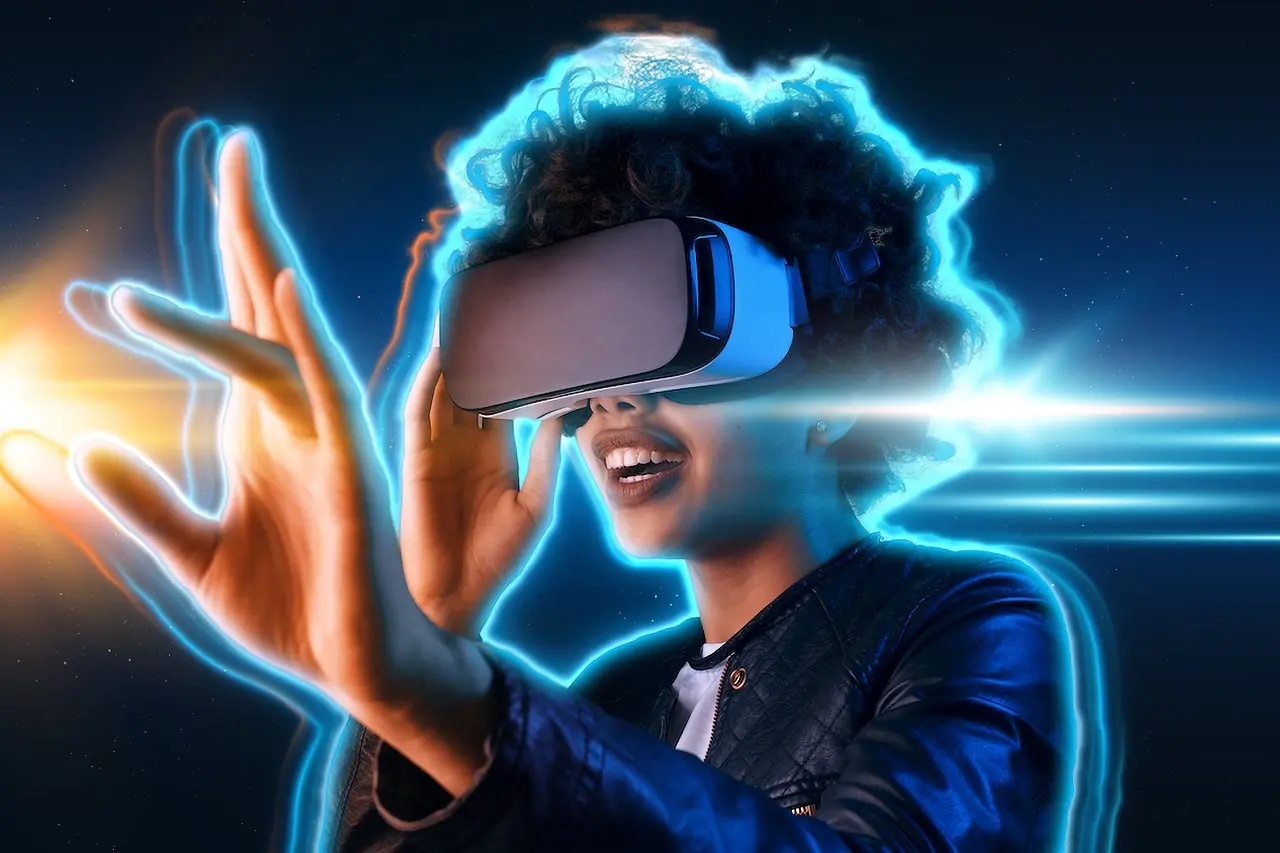Elevating Education: The Influence of Enhanced Connectivity on Academic Transformation
In today’s digital age, educational transformation through connectivity has become a crucial aspect of education, revolutionizing the way students learn and teachers teach. The accessibility and widespread availability of the internet have paved the way for an inclusive, interactive, and dynamic learning experience. In summary, this article delves into the significance of educational transformation through connectivity and offers an overview of how the education industry heavily relies on the internet for its advancement.
Importance of Internet Connectivity in Education
The internet plays a pivotal role in facilitating access to information, empowering students with a vast array of resources at their fingertips. Additionally, with just a few clicks, learners can access educational materials, research papers, and multimedia content, expanding their knowledge and promoting self-paced learning. Furthermore, the internet enables students to explore diverse subjects, fostering curiosity and critical thinking.
The Education Industry’s Reliance on Connectivity: Embracing Educational Transformation through Connectivity
The education industry heavily depends on internet connectivity for various purposes. Remote learning has gained prominence, particularly during the COVID-19 pandemic, allowing students to continue their education despite physical limitations. Geographical barriers are being overcome through virtual classrooms and online discussions, fostering collaboration and global connections. Moreover, internet connectivity has paved the way for personalized learning, tailoring educational content to meet individual needs and promoting lifelong learning.
Access to Information
In the digital age, internet connectivity has emerged as a powerful tool, revolutionizing education by broadening access to educational resources, enabling self-paced learning, and facilitating research and exploration. This article explores how internet connectivity is transforming the educational landscape, providing students with unprecedented opportunities for growth and knowledge acquisition.
Broadening Access to Educational Resources: Expanding Educational Transformation through Connectivity
With internet connectivity, students gain access to a wealth of educational resources from various online platforms, libraries, and databases. The internet acts as a gateway, demolishing barriers to information and opening doors to a world of knowledge. Learners can explore diverse subjects, engage with multimedia content, and delve into academic materials, broadening their intellectual horizons.
Enabling Self-paced Learning
Internet connectivity empowers students to learn at their own pace, catering to individual learning styles and preferences. Furthermore, online platforms offer interactive modules, video tutorials, and practice exercises that facilitate independent learning. Moreover, learners can revisit concepts, review materials, and reinforce their understanding whenever and wherever they choose, fostering a sense of autonomy and self-directed growth.
Facilitating Research and Exploration: Empowering Educational Transformation through Connectivity
The internet serves as a vast repository of information, enabling students to conduct research and explore a wide range of topics. For this reason, search engines, online databases, and scholarly journals provide a wealth of resources that support academic inquiry. Students can engage in in-depth research, analyse data, and access primary sources, fostering critical thinking skills and promoting a deeper understanding of the subject matter.
Remote Learning
The COVID-19 pandemic has brought about unprecedented challenges for the education sector, but it has also highlighted the remarkable adaptability of internet connectivity. This part explores how internet connectivity has enabled the education industry to adapt during the pandemic, overcome geographical barriers, and enhance flexibility in learning.
Educational Transformation in the Face of COVID-19: Adapting and Innovating through Connectivity
The COVID-19 pandemic forced educational institutions to quickly shift to remote learning models. Furthermore, internet connectivity became the lifeline that kept education accessible amidst physical distancing measures. Online learning platforms, video conferencing tools, and digital collaboration spaces enabled teachers to deliver lessons, engage with students, and provide support remotely. Without a doubt, this adaptation showcased the resilience of the education sector in embracing technology and harnessing the power of the internet.
Overcoming Geographical Barriers
Internet connectivity has dissolved geographical barriers, making education accessible to students regardless of their location. Students in remote or underserved areas can now access quality education through online platforms. Furthermore, the internet has connected learners to resources, experts, and opportunities that were once out of reach, levelling the playing field and promoting educational equity.
Increasing Flexibility in Learning: Adapting Education through Educational Transformation and Connectivity
Internet connectivity has revolutionized the concept of learning, introducing unprecedented flexibility. Students can engage in self-paced learning, accessing educational materials and resources at their convenience. Online platforms offer interactive modules, multimedia content, and discussion forums that foster engagement and collaboration. All in all, the internet has given rise to blended learning models, combining online and in-person instruction, providing students with personalized and adaptable learning experiences.
Collaborative Learning
Internet connectivity has revolutionized education by enhancing communication and collaboration among students and teachers. This piece explores how internet connectivity fosters seamless interaction, enables virtual classrooms and online discussions, and promotes global connections and cultural exchange.
Enhancing Communication and Collaboration
Internet connectivity has transformed the way students and teachers communicate. Through instant messaging, email, and video conferencing, educators can provide timely feedback and support, fostering a more engaged learning experience. The internet also enables collaborative projects, empowering students to work together on assignments and share ideas effortlessly.
Enabling Virtual Classrooms and Online Discussions: Collaborative Educational Transformation through Connectivity
Virtual classrooms have emerged as a powerful tool in the education landscape. Internet connectivity allows teachers to conduct live lessons, deliver lectures, and facilitate interactive discussions through video conferencing platforms. Furthermore, students can participate in real-time, ask questions, and engage in meaningful dialogue with their peers and instructors, creating an inclusive and dynamic learning environment.
Fostering Global Connections: Cultural Exchange and Educational Transformation through Connectivity
Internet connectivity transcends borders, enabling students to connect with peers from around the world. Online platforms promote cultural exchange, providing opportunities for students to learn about different perspectives, traditions, and languages. Subsequently, collaborative projects and virtual exchanges foster empathy, understanding, and global citizenship, preparing students for an interconnected world.
Personalized Learning
Internet connectivity has revolutionized education by enabling personalized learning experiences. This article explores how internet connectivity tailors educational content to individual needs, utilizes adaptive learning platforms, and promotes lifelong learning.
Tailoring Educational Content to Individual Needs
Internet connectivity allows educators to cater to the unique learning needs of each student. Online platforms offer personalized learning paths, adaptive assessments, and targeted resources. Furthermore, through data analysis and algorithms, educational content can be tailored to individual strengths, weaknesses, and interests, ensuring a more engaging and effective learning experience.
Utilizing Adaptive Learning Platforms: Personalized Education Transformation through Connectivity
Adaptive learning platforms harness the power of internet connectivity to deliver customized instruction. Additionally, these platforms adapt content and learning activities based on student performance and feedback, providing targeted support and challenges. Students can progress at their own pace, reinforcing understanding and filling knowledge gaps, leading to improved learning outcomes.
Lifelong Learning Enabled: Embracing Educational Transformation through Connectivity
Internet connectivity has revolutionized the concept of lifelong learning. Specifically, learners of all ages can access a wealth of online courses, webinars, and resources to expand their knowledge and acquire new skills. With just a few clicks, individuals can pursue personal and professional development, fostering a culture of continuous learning and growth.
Skill Development
Internet connectivity has become a game-changer in education, providing access to online courses and certifications, developing digital literacy and technological skills, and bridging the skills gap to promote employability. This part explores the transformative role of internet connectivity in empowering individuals with essential skills for success.
Access to Online Courses and Certifications: Driving Educational Transformation through Connectivity
Internet connectivity has opened up a world of learning opportunities through online courses and certifications. Learners can access a diverse range of subjects and acquire new knowledge, regardless of their geographical location. Online platforms offer flexible schedules and self-paced learning, allowing individuals to upskill and gain industry-relevant qualifications.
Developing Digital Literacy and Technological Skills
Internet connectivity plays a crucial role in developing digital literacy and technological skills. Additionally, through online resources, tutorials, and interactive platforms, individuals can enhance their understanding of digital tools, applications, and software. Overall, the internet fosters exploration, experimentation, and hands-on learning, empowering individuals to navigate the digital landscape confidently.
Bridging the Skills Gap: Enhancing Employability through Educational Transformation and Connectivity
Internet connectivity bridges the skills gap by providing access to educational resources that align with industry demands. Online courses offer specialized training, equipping individuals with in-demand skills and competencies. This enables them to enhance their employability, adapt to changing job market trends, and seize new career opportunities.
Challenges and Solutions
Internet connectivity has the potential to revolutionize education, but it also brings challenges that need to be addressed. Additionally, this article explores the importance of addressing the digital divide, ensuring data privacy and cybersecurity, and promoting digital literacy and technology integration in education.
Addressing the Digital Divide: Ensuring Equal Access for Educational Transformation through Connectivity
Additionally, the digital divide creates disparities in access to internet connectivity and technology, limiting educational opportunities for underserved communities. Specifically, it is essential to address this divide by providing affordable internet access, improving infrastructure in remote areas, and offering digital devices to those who cannot afford them. By ensuring equal access, we can promote educational equity and bridge the gap between privileged and disadvantaged learners.
Ensuring Data Privacy and Cybersecurity
As education becomes increasingly reliant on the internet, it is crucial to prioritize data privacy and cybersecurity. For instance, educational institutions must implement robust security measures to protect sensitive student information and prevent unauthorized access. Moreover, educators and students should be educated about safe online practices and be equipped with the knowledge to safeguard their personal data.
Promoting Digital Literacy and Technology Integration in Education
Additionally, to fully harness the benefits of internet connectivity, digital literacy is paramount. Students must be equipped with the necessary skills to navigate online platforms, critically evaluate information, and use digital tools effectively. Teachers should receive professional development opportunities to enhance their technology integration skills, enabling them to create engaging and interactive learning experiences.
Conclusion
In summary, internet connectivity has emerged as a transformative force in education, revolutionizing the way students learn and teachers instruct. This article explores the remarkable impact of internet connectivity on education and the need for continued development to unlock its full potential.
Promoting Digital Literacy and Technology Integration: Empowering Educational Transformation through Connectivity
Internet connectivity has transcended traditional boundaries, enabling access to a vast array of educational resources, tools, and platforms. For instance, students can explore interactive learning materials, engage in virtual collaborations, and access information from around the globe. Furthermore, teachers can leverage online platforms to deliver dynamic lessons, provide personalized feedback, and engage students in meaningful ways. Internet connectivity has democratized education, breaking down barriers and fostering a culture of continuous learning.
Educational Transformation through Connectivity: Unleashing the Power of Internet Connectivity in Education
As technology continues to evolve, the potential for internet connectivity in education is boundless. Advancements in artificial intelligence, virtual reality, and augmented reality hold promise for immersive and personalized learning experiences. Continued development of internet infrastructure, particularly in underserved areas, is crucial to ensure equal access for all learners. Collaboration between educational institutions, policymakers, and technology providers is essential to drive innovation, improve digital literacy, and harness the full potential of internet connectivity.
Internet connectivity has transformed education, empowering learners with access to vast knowledge, fostering collaboration, and opening doors to new opportunities. Moreover, as we look towards the future, it is imperative to continue developing and expanding internet connectivity in education. All in all, by embracing the transformative power of connectivity, we can shape a future where education is accessible, inclusive, and equipped to prepare learners for the challenges and opportunities of a rapidly evolving world.










